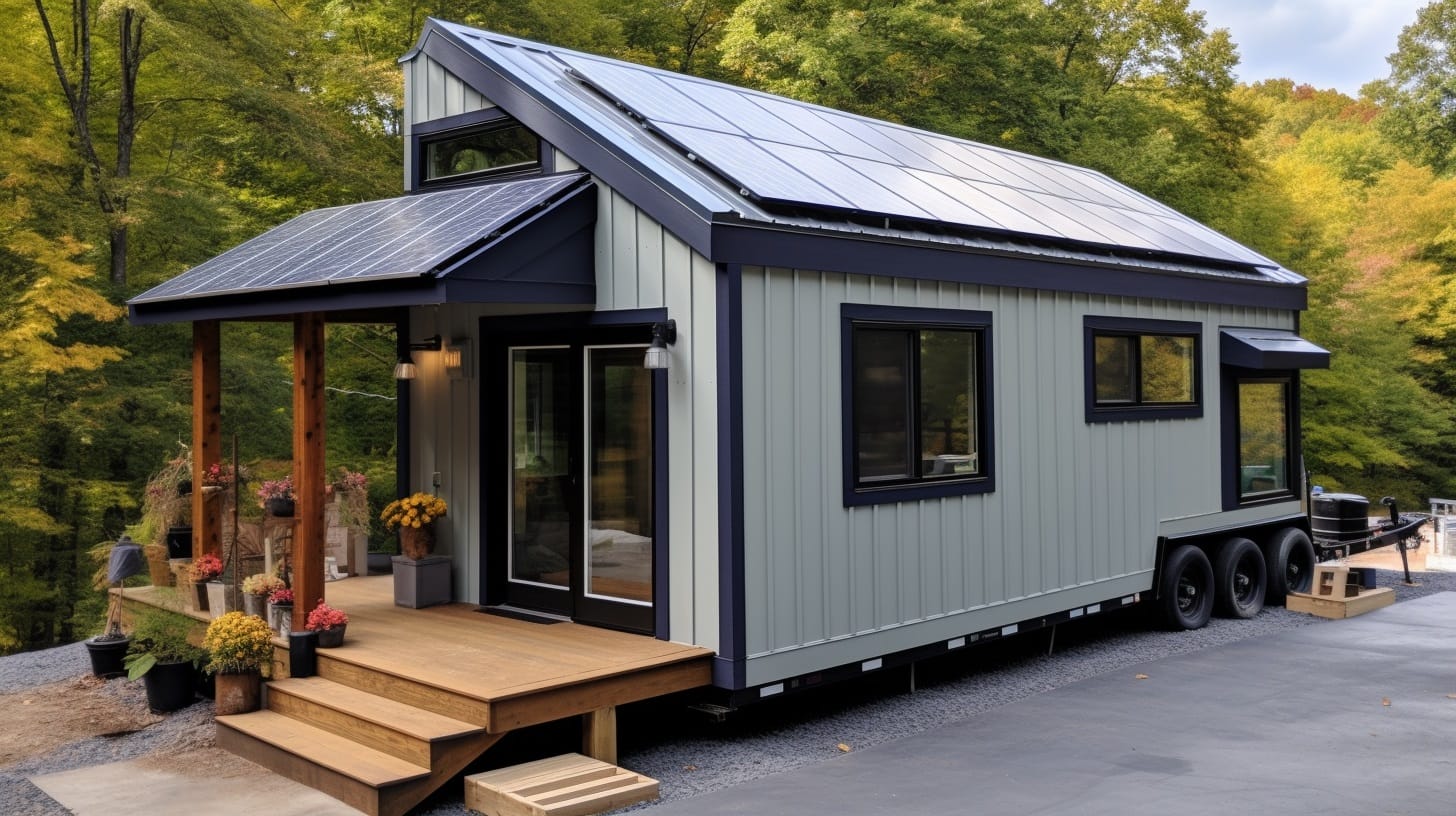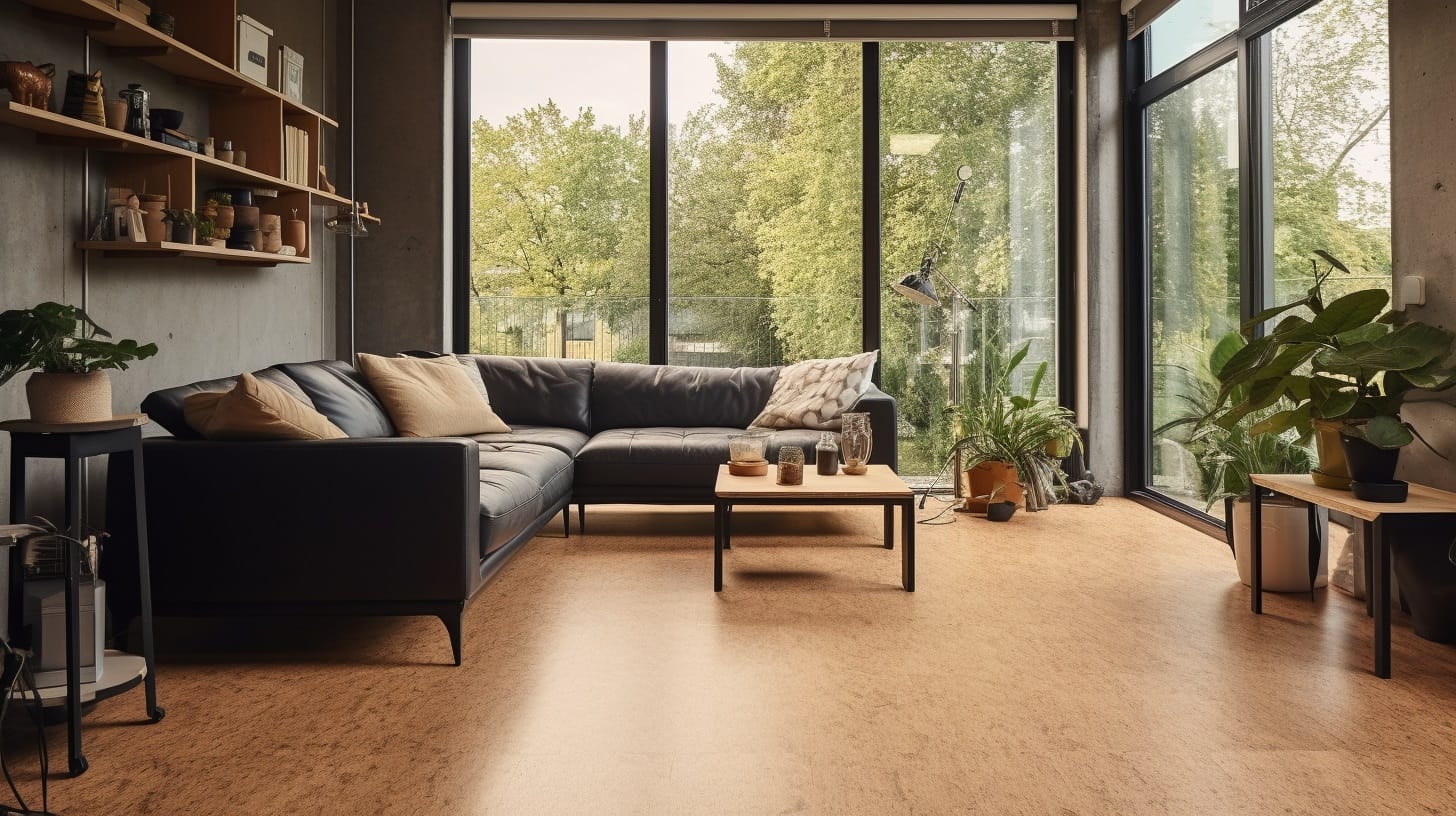Living sustainably is about making choices that tread lightly on the planet. Tiny houses inherently require fewer resources than conventional homes. But you can make a tiny home even more eco-friendly with smart design decisions.
Follow these 12 tips to create an ultra-green tiny house through sustainable features and eco-conscious building methods. Small changes add up to a dramatically lower environmental impact.
1. Optimize Solar Orientation
Strategically orienting your tiny house to best harness the sun’s power can passively heat and light the home.
- Install more windows on the south side to maximize winter solar gain.
- Minimize windows on the north side where heat loss is greatest.
- Add overhangs above south windows to block excessive summer sun.
- Consider the sun’s arc and tree shade patterns when siting the house.
Passive solar design provides free heating and light, slashing energy needs by up to 30%, according to the Department of Energy.

2. Insulate for Maximum Efficiency
Super-insulate your tiny house to prevent heat transfer and energy leakage. Top options:
- Spray foam insulation for a superior air seal.
- Recycled denim or cotton insulation as eco-friendly alternatives.
- Ensure all gaps, joints and penetrations are thoroughly caulked and sealed.
- Upgrade to triple-paned windows for better insulation.
Proper insulation cuts heating and cooling costs by up to 50%, reducing your energy use and carbon footprint.
3. Install Solar Panels
Solar panels provide renewable energy from the sun and make an off-grid lifestyle possible.
- Size your solar array and battery bank to meet your electricity needs.
- Consider grid-tied net metering to sell excess power back to the utility company.
- Choose high-efficiency monocrystalline panels for maximum solar gain.
- Situate panels at the optimal angle facing due south.
Investing in solar offsets fossil fuel energy and gets you closer to carbon neutrality.

4. Reclaim and Upcycle Building Materials
Use reclaimed and recycled building materials to reduce environmental impact:
- Search salvage yards and reused building supply stores for windows, siding, fixtures and more.
- Upcycle and repurpose items like shipping pallets for the subfloor.
- Choose recycled plastic lumber, composite decking and reclaimed wood.
- Buy eco-friendly insulation made from recycled denim, paper or cotton.
Reusing and recycling building materials keeps waste out of landfills.
5. Add Lots of Natural Light
Strategically sized and placed windows maximize natural light, reducing the need for artificial lighting.
- Install skylights and sun tunnels to brighten interior spaces.
- Opt for large windows on the east, south and west sides to harness sunlight.
- Choose low-E glass for improved insulation and light transmission.
- Whitewash interior walls and ceilings to evenly distribute natural light.
Let the sun provide free, sustainable illumination all day long.
6. Install Eco-Friendly Floors
Sustainable flooring options for your tiny house include:
- Bamboo or cork which are quickly renewable.
- Recycled glass tile which diverts waste from landfills.
- Natural linoleum made from linseed oil and pine resin.
- Refinished salvaged wood flooring to give it new life.
- Concrete slab integrating recycled aggregates and fly ash.
Green flooring materials are kinder to the environment both in production and installation.

7. Go Off-Grid with a Composting Toilet
Waterless composting toilets are a sustainable alternative to conventional flush toilets:
- Compost human waste on-site instead of using precious water.
- Avoid the need for fragile septic systems or sewer connections.
- Select electric or solar-powered models to actively evaporate liquids.
- Use coconut coir or peat moss as organic composting medium.
Composting toilets conserve water and allow true off-grid living.
8. Incorporate Eco-Friendly Appliances
Choose the most energy and water efficient appliance models:
- Opt for Energy Star rated refrigerators, dishwashers, and clothes washers.
- Install on-demand tankless water heaters that provide hot water only when needed.
- Use propane for ovens, cooktops, and some heaters to avoid electricity.
- Select LED light bulbs which use a fraction of the energy.
Efficient appliances and lighting cut your home’s energy consumption by 20% or more.
9. Ventilate and Insulate Smartly
Proper ventilation and insulation work together to create a comfortable sustainable interior:
- Carefully size, place, and shade windows to utilize passive cooling breezes.
- Install ceiling fans to facilitate air circulation on hot days.
- Make sure insulation is continuous and seamless to prevent heat and cold leakage.
- Use insulation with the highest R-value suitable for your climate zone.
Strategic insulation and ventilation lessen the need for manufactured heating and cooling.
10. Incorporate Eco-Landscaping
Sustainable landscaping around your tiny house can:
- Provide shade to cool the home naturally in summer.
- Create a wind break to reduce heat loss in winter.
- Support food production in edible gardens.
- Filter rainwater runoff before it enters the watershed.
- Attract pollinators like bees and butterflies.
Eco-landscaping contributes to tiny house sustainability.
11. Add Houseplants for Natural Air Filtration
Houseplants green your indoor space and provide natural air purification:
- Spider plants, ferns, and palms filter toxins and improve air quality.
- Succulents and cacti boost oxygen levels and remove CO2.
- Plants add biophilic design and brighten your tiny home.
- Greenery improves health, concentration, and mood.
- Plants thrive in miniature greenhouses with grow lights.
Nurturing indoor plants mutually benefits you and the planet.
12. Join or Build an Eco-village
Living in a sustainable tiny house community allows sharing green resources:
- Achieve economies of scale by collectively investing in renewable energy systems.
- Grow food together in community gardens.
- Share tools, vehicles, and other equipment.
- Teach each other new eco-friendly DIY skills and techniques.
- Encourage and inspire each other’s environmental stewardship.
Tiny house communities make sustainable living more accessible.

Eco-Friendly Doesn’t Have to Be Expensive
While certain sustainable features like solar panels involve an upfront investment, many green options for your tiny house simply require making thoughtful design choices:
- Optimize window placement for passive heating, cooling and light.
- Reuse salvaged building materials from recycled sources.
- Incorporate energy-efficient appliances and LED lighting.
- Install a waterless composting toilet.
- Ventilate strategically and seal insulation gaps.
- Use eco-friendly non-toxic building materials.
- Plant native trees and vegetation around your home.
- Join a tiny house community to share resources.
With creativity and commitment, you can minimize your tiny home’s environmental impact. Small tweaks make a real difference.
Common Questions on Eco-Friendly Building
If you’re new to green tiny living, here are answers to some frequently asked questions:
How much does it cost to add eco-friendly features to a tiny house?
It depends on which features you select. Basic upgrades like insulation and appliances are fairly affordable. Solar panels involve a bigger investment of $5k-$15k but pay off long-term.
What are the best resources for learning eco-friendly building techniques?
Sustainability blogs, green building books and magazines, online homesteading communities, DIY workshops, and green architects and contractors are great resources.
What are the biggest impacts I can make through my tiny house design?
Solar panels, air sealing and insulation, window placement, water efficiency, and avoiding toxic building materials have the biggest effect on increasing sustainability.
Should I build my tiny house on wheels or on a foundation?
Mobility enables locating your home optimally and joining eco-villages more easily. But a fixed tiny reduces disturbance to the landscape.
How important is it to orient my tiny house for passive solar?
Proper solar orientation makes a big difference in harnessing the sun for heating, cooling and daylighting. It’s one of the most critical design considerations.
What are easy ways to make my current tiny home more eco-friendly?
Simple upgrades like weatherproofing, installing smart thermostats, switching to LED lighting, adding plants, and using eco-cleaners and reusable products can reduce environmental impact.
Following eco-friendly building practices enables you to reduce your environmental footprint and tread more lightly on our planet. What green tiny house design strategies are you most excited to implement? Let me know in the comments below!
